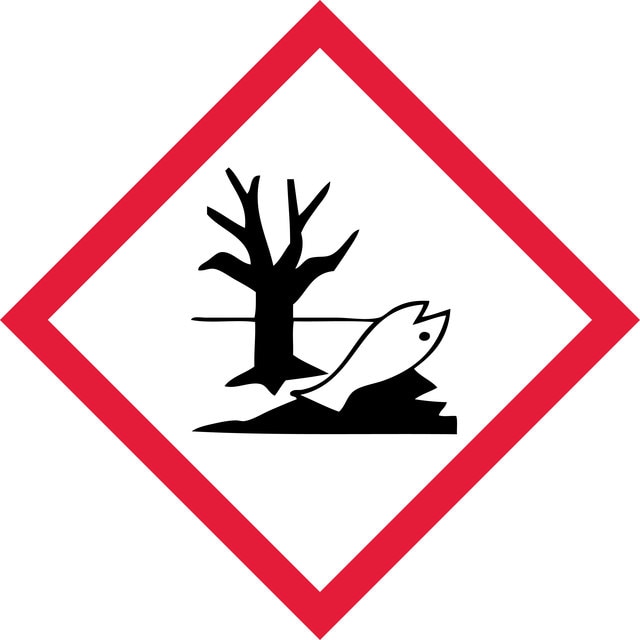2504
ReBlot Plus Strong Antibody Stripping Solution, 10x
Synonym(s):
Western blot stripping solution, blot stripping solution
Select a Size
About This Item
form
liquid
packaging
pkg of 50 mL
manufacturer/tradename
Chemicon®
Re-Blot™
technique(s)
western blot: suitable
detection method
chemiluminescent
shipped in
wet ice
General description
Stripping and re-probing of Western blots offers several advantages:
1) Conservation of samples that are expensive or available only in limited quantities,
2) Analysis of a given blot using several different antibodies, e.g. subtype- or isoform-specific antibodies,
3) Re-analysis of anomalous results and confirmation with the same or a different antibody,
4) Correcting errors in incubation with the wrong antibody,
5) Cost savings in reagents and time by reusing the same blot.
While antigen and antibody-based immunoaffinity matrices, such as Sepharose™ conjugates, have been reused many times without compromising antigen-antibody reactivity, the need for pH extremes and chaotropic agents has precluded the application of these methods to Western blotting.
The MILLIPORE Re-Blot Plus Western Blot Strong Antibody Stripping Solution contains specially formulated solutions that quickly and effectively remove antibodies from Western blots without significantly affecting the immobilized proteins.
Advantages of the Re-Blot Plus Western Blot Strong Antibody Stripping Solution include:
· No pungent-smelling b-mercaptoethanol is contained in the Antibody Stripping Solution.
· Antibody stripping is done at room temperature. No heating of blots is required.
· Blots can be stripped of antibodies in approximately 15 minutes at room temperature.
· Blots may be reused in 25 minutes.
Application
The Re-Blot Plus Western Blot Strong Antibody Stripping Solution should be used only for qualitative purposes until it has been established by comparative blot analysis that stripping does not quantitatively affect a given antigen.
This product is for research use only; not for diagnostic or in vivo use.
Preparation Note
Note: To prevent reagent degradation secure the cap tightly upon storage. Avoid extended exposure to air.
Other Notes
Legal Information
Disclaimer
Signal Word
Danger
Hazard Statements
Precautionary Statements
Hazard Classifications
Acute Tox. 3 Dermal - Acute Tox. 3 Inhalation - Acute Tox. 4 Oral - Aquatic Chronic 2 - Eye Dam. 1 - Met. Corr. 1 - Skin Corr. 1A
Storage Class Code
6.1B - Non-combustible acute toxic Cat. 1 and 2 / very toxic hazardous materials
WGK
WGK 2
Flash Point(F)
Not applicable
Flash Point(C)
Not applicable
Certificates of Analysis (COA)
Search for Certificates of Analysis (COA) by entering the products Lot/Batch Number. Lot and Batch Numbers can be found on a product’s label following the words ‘Lot’ or ‘Batch’.
Already Own This Product?
Find documentation for the products that you have recently purchased in the Document Library.
Related Content
Antibody reuse for Western blotting is a common practice for many researchers. While many antibodies lose potency with time or degrade even faster due to improper storage conditions, it is important to recognize the potential value of recovering the primary antibody for possible reuse in some experiments. The SNAP i.d.® 2.0 system is not only able to reduce the immunodetection processing time, but its flexibility lets you combine conditions used in the standard immunodetection protocol and also allows the collection of antibody for future reuse. Here, we compare the antibody recovery and reuse in the standard immunodetection protocol with the antibody recovery and reuse in SNAP i.d.® system using the extended protocol and the original SNAP i.d.® protocol.
Western blotting is one of the most commonly used techniques in the lab, yet difficulties persist in obtaining consistent, quality results. We’ve been helping scientists publish their Western blots for decades, with continued innovation and steadfast technical support. Explore our expanded portfolio of products, including optimized reagents for chemiluminescent and Ḁuorescent Westerns, as well as the SNAP i.d.® system, which reduces blocking, washing and antibody incubation time from hours to minutes.
There’s so much room for experimental variability in traditional immunodetection workflows. For your peace of mind – and ours – we designed the SNAP i.d.® 2.0 system to streamline your Western blot and immunohistochemistry experiments. The concept is simple: a vacuum-driven flow of blocking, antibody, and washing solutions reduces slide and membrane handling. That means a lot less shaking, dipping, pouring and waiting. And now you can process multiple blots and slides in parallel, so it’s easy to apply consistent conditions across experiments.
Global Trade Item Number
| SKU | GTIN |
|---|---|
| 2504 | 04053252471629 |


